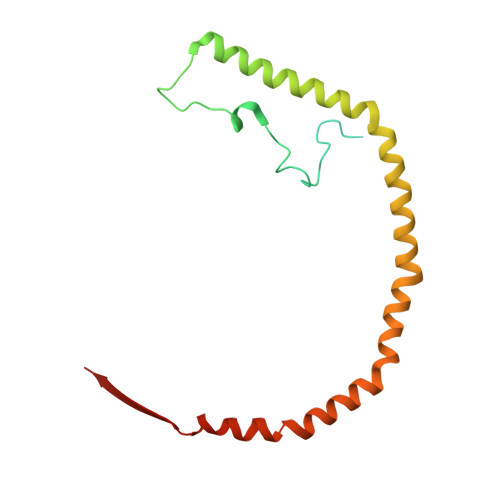Molecular architecture of the human caveolin-1 complex.
Porta, J.C., Han, B., Gulsevin, A., Chung, J.M., Peskova, Y., Connolly, S., Mchaourab, H.S., Meiler, J., Karakas, E., Kenworthy, A.K., Ohi, M.D.(2022) Sci Adv 8: eabn7232-eabn7232
- PubMed: 35544577
- DOI: https://doi.org/10.1126/sciadv.abn7232
- Primary Citation of Related Structures:
7SC0 - PubMed Abstract:
Membrane-sculpting proteins shape the morphology of cell membranes and facilitate remodeling in response to physiological and environmental cues. Complexes of the monotopic membrane protein caveolin function as essential curvature-generating components of caveolae, flask-shaped invaginations that sense and respond to plasma membrane tension. However, the structural basis for caveolin's membrane remodeling activity is currently unknown. Here, we show that, using cryo-electron microscopy, the human caveolin-1 complex is composed of 11 protomers organized into a tightly packed disc with a flat membrane-embedded surface. The structural insights suggest a previously unrecognized mechanism for how membrane-sculpting proteins interact with membranes and reveal how key regions of caveolin-1, including its scaffolding, oligomerization, and intramembrane domains, contribute to its function.
Organizational Affiliation:
Life Sciences Institute, University of Michigan, Ann Arbor, MI, USA.














